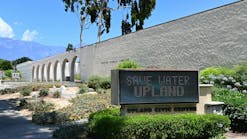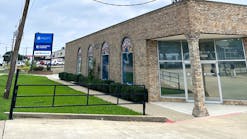Conversion to a membrane bioreactor system will allow the Mifflinburg Borough to meet Chesapeake Bay Tributary Strategy limits for nitrogen and phosphorous.
Click here to enlarge imageDespite these deficiencies, the Mifflinburg Borough wastewater treatment plant provides excellent treatment at its current flows and loading to secondary levels, but it will be unable to consistently meet the proposed limits of the Chesapeake Bay Tributary Strategy for nutrient removal. In planning for the next 20 years, the facility will need to achieve approximately 4.0 mg/ of Total Nitrogen and 0.5 mg/l of Total Phosphorous at its design flow of 1.4 mgd.
Options Considered
Seeing the need for change, management at Mifflinburg Borough asked the engineering firm of Herbert, Rowland & Grubic Inc. to prepare a capital improvement plan and evaluate the best course of action to meet future wastewater treatment needs and regulatory requirements.
In preparing the plan, HRG engineers studied the historical flow and loading to the plant, the potential for growth and development in the service area and the current state of the treatment plant. They selected various alternatives for review and evaluated their advantages, disadvantages, and costs. These options included the construction and rehabilitation of the Sequencing Batch Reactors, construction of a Vertical Loop Reactor, and conversion of the Sequencing Batch Reactors to a Membrane Bioreactor.
To fully evaluate each of these alternatives, Mifflinburg considered several factors:
- Ability to meet current and proposed regulations
- Overall reliability and stability
- Ability to handle changing conditions such as future growth or changes in flow and concentration as a result of the ongoing inflow and infiltration program
- Ability to minimize impacts to environmental and cultural or historical resources
- Overall capital cost, operation costs and present worth of the alternatives.
While the membrane bioreactor option was more expensive than upgrading the sequencing batch reactors, the ability of a membrane bioreactor to maximize the existing tankage and provide valuable additional tankage to meet and exceed the proposed nutrient limits was found to be the deciding factor.
When construction is complete, the membrane bioreactor and biological system will use a traditional biological treatment scheme and will replace traditional clarification for solids separation with a submerged or pressure membrane. Because the membrane provides a near-total barrier to suspended solids, concerns over bulking sludge will be virtually eliminated, and the biological process can be operated at elevated mixed liquor suspended solids concentrations. This allows smaller tank volumes to achieve the same treatment results, and the minimization of treatment tankage is what allows Mifflinburg to use its existing sequencing batch reactor tankage for maximum benefit.
Proposed Upgrades
To complete the Membrane Bioreactor improvements, the Borough of Mifflinburg will rehabilitate many portions of its facility including:
- Installation of fine screening/grit removal and solids handling in a new 9 mgd headworks
- Conversion of a portion of the existing sequencing batch reactors to flow equalization storage and construction of a stand-alone 1 MG equalization tank
- Conversion of a portion of the existing sequencing batch reactors to a membrane bioreactor with an integrated biological nutrient removal system capable of passing peak flows of 4.5 mgd
- Installation of ultraviolet light disinfection
- Installation of a chemical precipitation system for enhanced total phosphorus removal
- Conversion of a portion of the existing sequencing batch reactors to aerobic digesters
The estimated probable project cost of the Membrane Bioreactor Improvements is $7.8 million with annual operating costs of $624,000. Construction of the upgraded facilities are scheduled to begin in the winter of 2007-2008 and should be completed by July 2009.
Using MBR technology, the borough will be able to reuse much of its existing equipment while meeting the strictest limits for nutrient removal that current technology will allow, reducing the likelihood of another upgrade in the near future.
About the Author:
Jason Wert, P.E., BCEE, is a senior project manager for Herbert, Rowland & Grubic, Inc. (HRG), a civil engineering firm providing water and wastewater treatment, environmental permitting and engineering, site development, transportation, surveying, and civil infrastructure services throughout the Mid-Atlantic Region. He has extensive knowledge of membrane filtration and has significant experience with Biological Nutrient Removal systems. He can be reached by email at [email protected].



